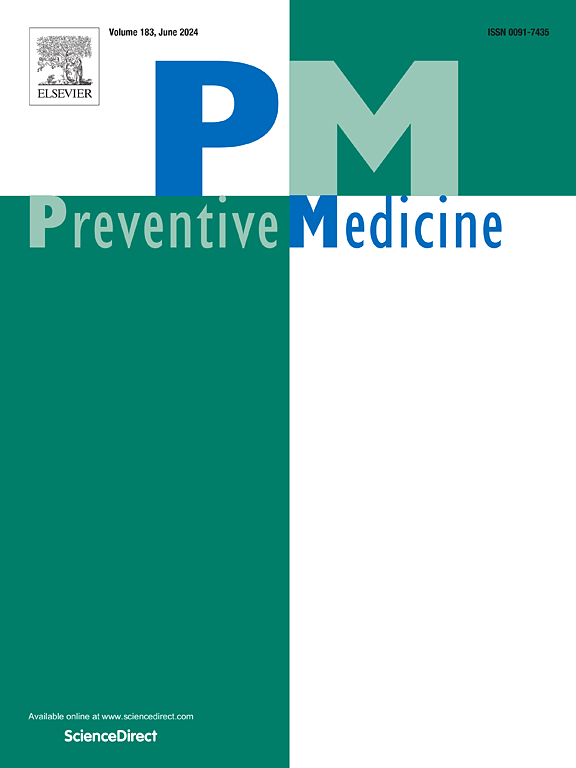Association between specific types of physical activities and cardiometabolic biomarkers: A comparative analysis between metabolic equivalent of task score and biomarker-weighted activity score in relation to type 2 diabetes in US health professionals
IF 4.3
2区 医学
Q1 MEDICINE, GENERAL & INTERNAL
引用次数: 0
Abstract
Objective
To examine specific physical activities' associations with biomarkers and compare metabolic equivalent of task (MET) score with biomarker-weighted score for type 2 diabetes (T2D) risk.
Methods
We used data from three large US prospective cohorts (1988/1991–2018/2019). Nine activities - walking, jogging, running, bicycling, lap swimming, tennis/squash, other aerobics, weightlifting, and heavy outdoor work - were assessed biennially. Biomarker analysis included 25,438 participants with data on C-peptide, C-reactive protein (CRP), intercellular adhesion molecule 1, leptin/adiponectin, and triglycerides/high-density lipoprotein cholesterol (TG/HDL). T2D risk analysis involved 183,892 participants followed for up to 30 years. Models were adjusted for confounders and total physical activity excluding the one of interest.
Results
Running demonstrated the strongest association with a healthier cardiometabolic profile, followed by jogging, aerobics and weightlifting. For every one hour/week of running, the percent difference in concentration was −4.4 % for C-peptide, −6.6 % for CRP, −11.5 % for leptin/adiponectin, and −5.6 % for TG/HDL (all P < 0.001). Adjusting for body mass index (BMI) slightly weakened the associations for these activities but they remained statistically significant. Walking and tennis/squash showed modest biomarker associations and became null after BMI adjustment. No association was observed for bicycling, lap swimming and heavy outdoor work, likely due to lacking intensity data. The biomarker-weighted score (90th vs. 10th of total physical activity, HR = 0.52; 95%CI, 0.50–0.55) had a stronger association with T2D risk than the MET score (HR = 0.61; 95%CI, 0.58–0.63).
Conclusions
Types of physical activity had distinct associations with cardiometabolic biomarkers. A biomarker-weighted score performs better than MET score for T2D risk.
特定类型的身体活动与心脏代谢生物标志物之间的关联:美国卫生专业人员与2型糖尿病相关的代谢等效任务评分和生物标志物加权活动评分之间的比较分析。
目的:研究特定体育活动与生物标志物的关联,并比较代谢任务当量(MET)评分与生物标志物加权评分对2型糖尿病(T2D)风险的影响。方法:我们使用了来自美国三个大型前瞻性队列(1988/1991-2018/2019)的数据。9项运动——散步、慢跑、跑步、骑自行车、游泳、网球/壁球、其他有氧运动、举重和繁重的户外运动——每两年进行一次评估。生物标志物分析包括25438名参与者的c肽、c反应蛋白(CRP)、细胞间粘附分子1、瘦素/脂联素和甘油三酯/高密度脂蛋白胆固醇(TG/HDL)数据。T2D风险分析涉及183,892名参与者,随访时间长达30 年。模型根据混杂因素和排除感兴趣因素的总体力活动进行调整。结果:跑步与更健康的心脏代谢状况的关系最强,其次是慢跑、有氧运动和举重。对于每一小时/周的跑步,c肽的浓度差异百分比为-4.4 %,CRP为-6.6 %,瘦素/脂联素为-11.5 %,TG/HDL为-5.6 %(所有P )结论:体力活动类型与心脏代谢生物标志物有明显的关联。生物标志物加权评分在T2D风险方面优于MET评分。
本文章由计算机程序翻译,如有差异,请以英文原文为准。
求助全文
约1分钟内获得全文
求助全文
来源期刊

Preventive medicine
医学-公共卫生、环境卫生与职业卫生
CiteScore
7.70
自引率
3.90%
发文量
0
审稿时长
42 days
期刊介绍:
Founded in 1972 by Ernst Wynder, Preventive Medicine is an international scholarly journal that provides prompt publication of original articles on the science and practice of disease prevention, health promotion, and public health policymaking. Preventive Medicine aims to reward innovation. It will favor insightful observational studies, thoughtful explorations of health data, unsuspected new angles for existing hypotheses, robust randomized controlled trials, and impartial systematic reviews. Preventive Medicine''s ultimate goal is to publish research that will have an impact on the work of practitioners of disease prevention and health promotion, as well as of related disciplines.
 求助内容:
求助内容: 应助结果提醒方式:
应助结果提醒方式:


